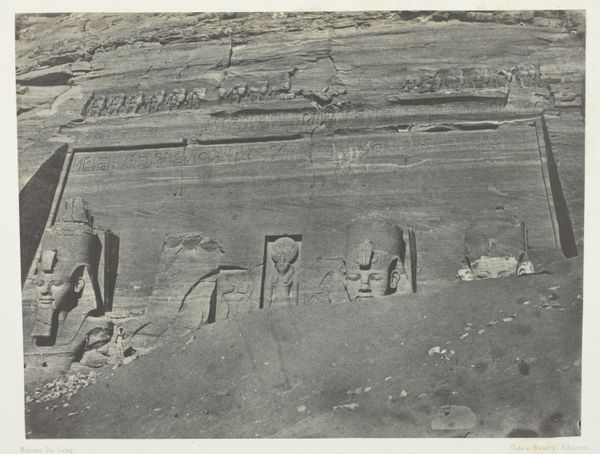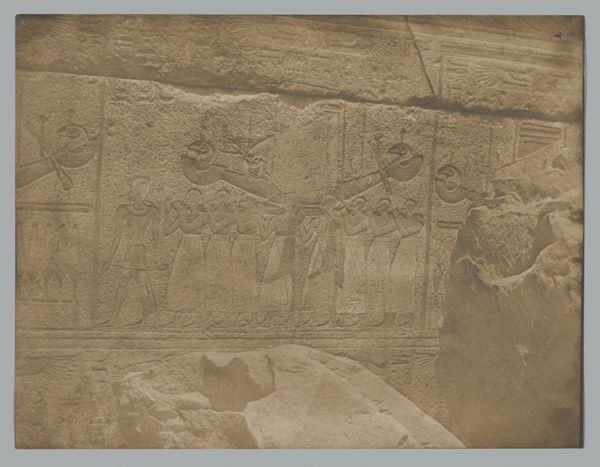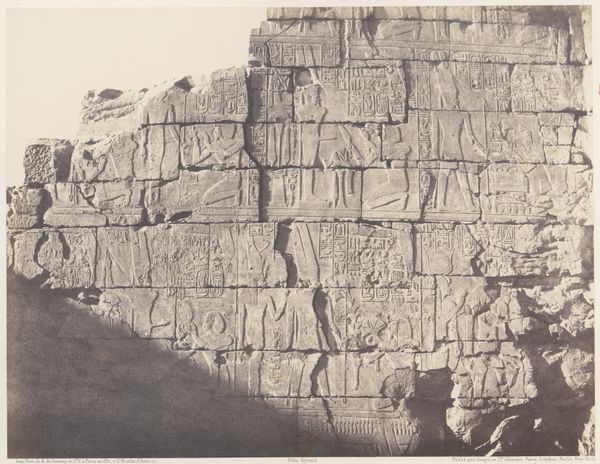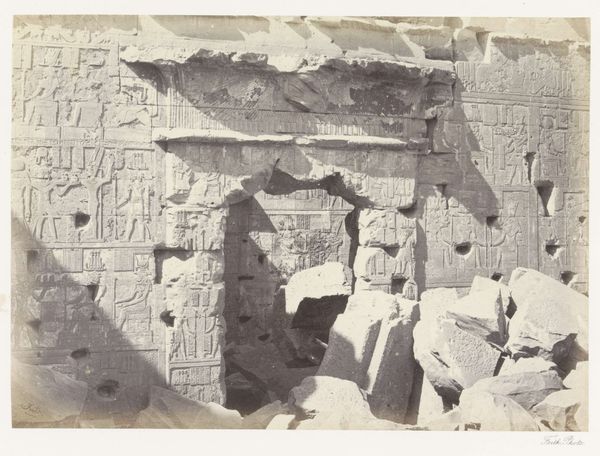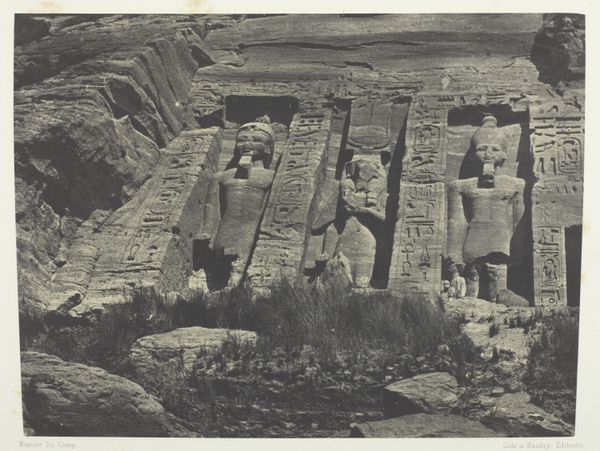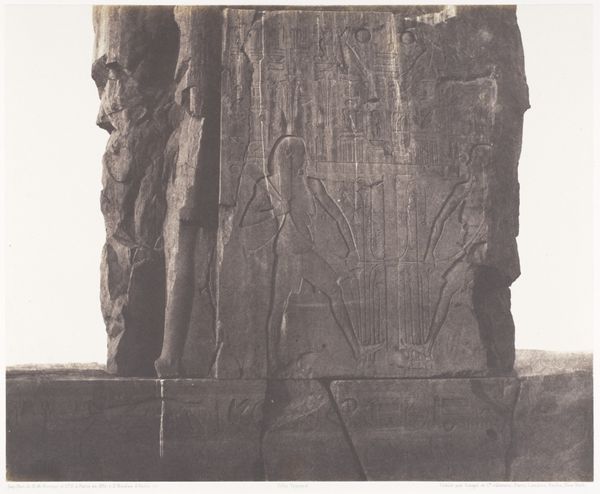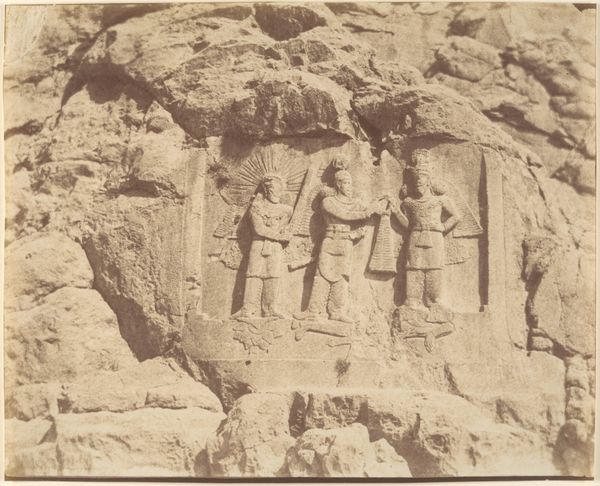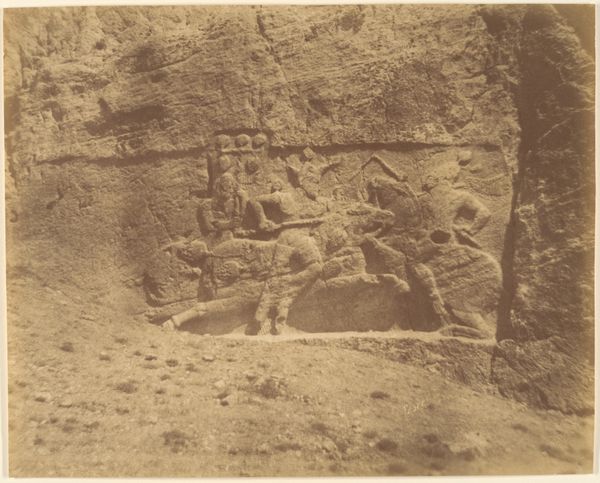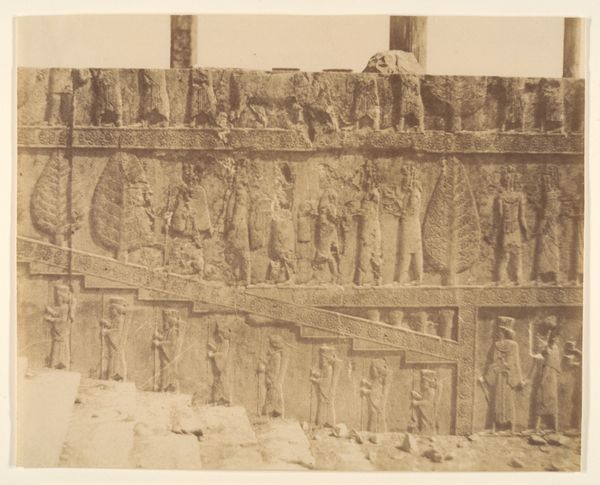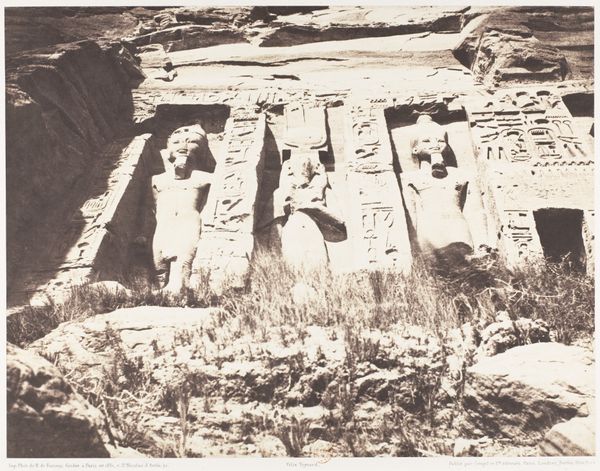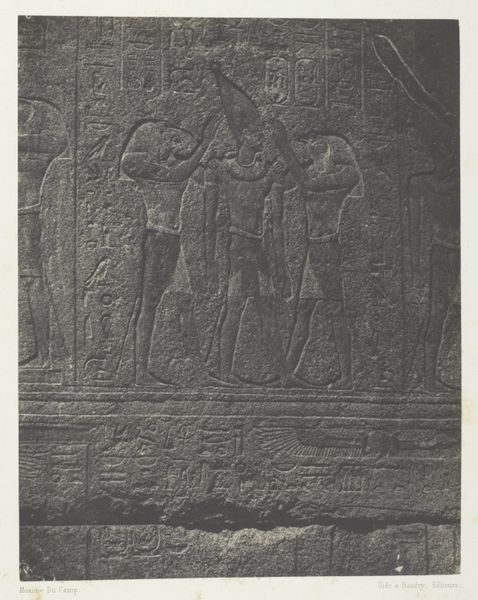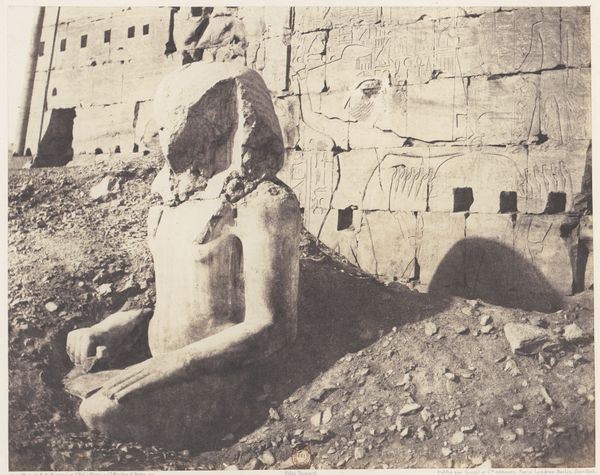
Thebes. Palais de Karnak. Sculptures extérieures du Sanctuaire de granit 1850
0:00
0:00
relief, photography, sculpture
#
relief
#
ancient-egyptian-art
#
photography
#
sculpture
#
history-painting
Copyright: Public Domain
Editor: This is Maxime Du Camp’s photograph from 1850, titled "Thebes. Palais de Karnak. Sculptures extérieures du Sanctuaire de granit," now at the Metropolitan Museum. The texture really strikes me—you can almost feel the age and weathering on the stone relief. How does this image speak to you? Curator: This photograph offers a fascinating glimpse into how nineteenth-century Europeans viewed and documented ancient Egypt. It isn’t just a straightforward record of the sculptures; it's deeply embedded within a colonial gaze. Think about why Du Camp chose to photograph these specific reliefs and how the stark, almost archaeological, presentation might shape the viewer's understanding of Egyptian civilization. Editor: So, it's not just about what’s shown, but also the photographer's perspective? Curator: Precisely. Consider the context. The 1850s was a time of intense European interest in Egypt, fuelled by archaeological discoveries and imperial ambitions. Du Camp, traveling with Flaubert, wasn't merely capturing images; he was participating in a broader project of knowledge production and cultural appropriation. How does this image contribute to, or perhaps challenge, the existing European narratives about ancient Egypt? Editor: It makes me think about how museums like the Met play a role in framing our understanding of history and different cultures. The way an artifact is presented really influences how we perceive it. Curator: Exactly. This image, placed within a museum collection, continues to participate in a dialogue about cultural heritage, ownership, and the power of representation. By examining the social and political context, we uncover layers of meaning far beyond what’s immediately visible. Editor: I never thought a photo could carry so much historical weight. It gives me a lot to consider. Curator: Indeed. The act of documentation is never neutral; it's always shaped by the prevailing cultural forces of the time. Analyzing those forces helps us understand not just the subject matter, but also ourselves.
Comments
No comments
Be the first to comment and join the conversation on the ultimate creative platform.
